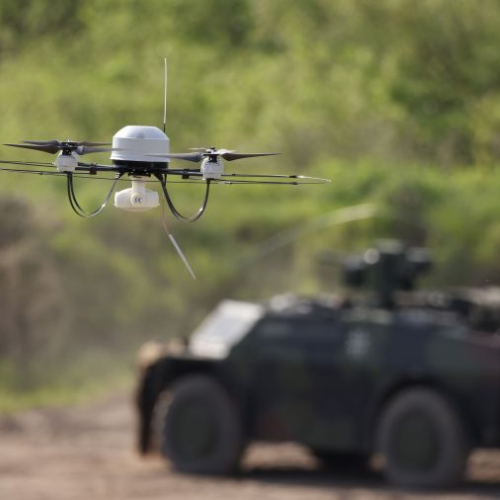Hackers are using a sneaky new trick to spy on people in Ukraine. They are pretending to be drone seller companies and official government groups to fool their victims. Once they gain trust, they send harmful files in emails. These files can secretly steal important information from computers.
Fake Emails, Real Threats
This new hacking campaign started in February and targets Ukraine’s armed forces, police departments, and local government offices—especially those close to Ukraine’s eastern border near Russia. These areas are already under a lot of pressure because of the ongoing conflict, and this cyberattack adds another serious problem.
The emails are sent from real but stolen accounts. This means that hackers get into someone’s email and use it to send fake messages. The emails look trustworthy because they come from people the victims already know or work with. That makes it more likely that the victim will open the email and click on any links or files inside.
Hackers carefully choose the subject lines of the emails to catch attention. They mention topics like clearing landmines, paying fines, building drones, or receiving money for homes destroyed in the war. All of these are real concerns for many Ukrainians, which makes the emails seem even more believable.
Sneaky Chaos: Drone Embedded Malware Shakes Up Russia-Ukraine War
Malware that Spreads through Drone Sellers
Inside these emails are files or attachments that hide two types of malware—bad software meant to cause harm or steal information.
The first type is a script, or a set of instructions, taken from a public GitHub page. GitHub is a website where computer programmers share code. While most of this code is used for good purposes, hackers sometimes find and use it for harmful reasons.
The second type of malware is more dangerous. It is called GiftedCrook. This malware is made to sneak into web browsers like Google Chrome, Microsoft Edge, and Firefox. Once inside, it steals cookies, browser history, and saved passwords.
Cookies are small pieces of data that keep you logged into websites, and saved passwords are exactly what they sound like—your login information. If someone steals these, they can easily break into your accounts without needing to guess your password.
Cyberattack Hits Ukraine’s Railway, Causing Travel Disruptions
After stealing the data, the malware compresses it into a single file and sends it over the messaging app Telegram. Using Telegram makes it harder for defenders to detect the activity because people widely use the app and don’t normally think of it as a place where hackers send stolen information.
Who’s Behind the Attacks?
Ukraine’s cyber emergency response team, called CERT-UA, is the group investigating these attacks. They are tracking the hackers under the name UAC-0226, but they have not said which country or group is behind the activity. There are no clear signs yet that link this hacker group to others known from the past.
Even though CERT-UA hasn’t shared everything, they did show examples of the fake emails used in the attacks. One email pretended to sell drones and included pictures to make it look more real. Another email looked like a schedule for clearing landmines in a Ukrainian city. These emails are designed to play on people’s fears and hopes, making them more likely to open them.
Russian Cybercriminals Wreak Havoc on Belgian Government Sites Over Ukraine Aid
In March alone, CERT-UA discovered three separate cyberattacks aimed at government agencies in Ukraine. All signs point to a carefully planned operation. The hackers clearly studied their targets and knew what kinds of messages would get their attention.
Cyberattacks like this are just one of many ways that digital warfare is being used in today’s world. While the damage may not be visible like in a traditional attack, the impact can be huge—especially when it involves military, police, and government systems.





